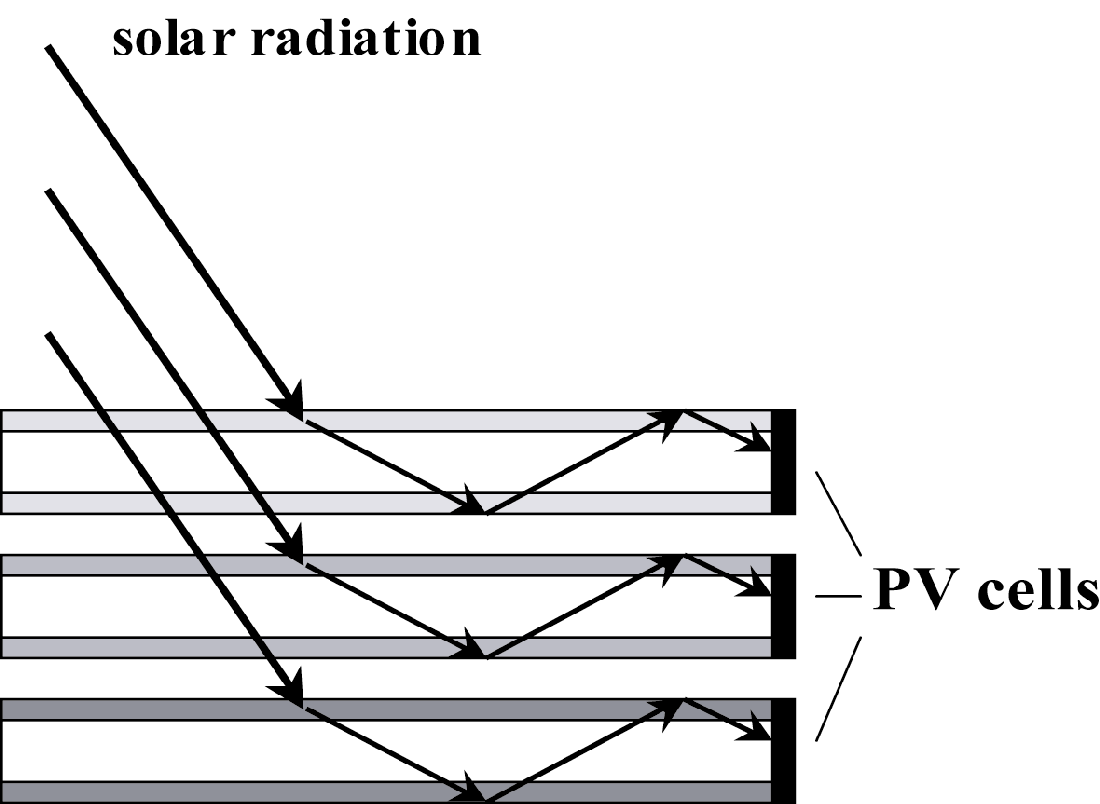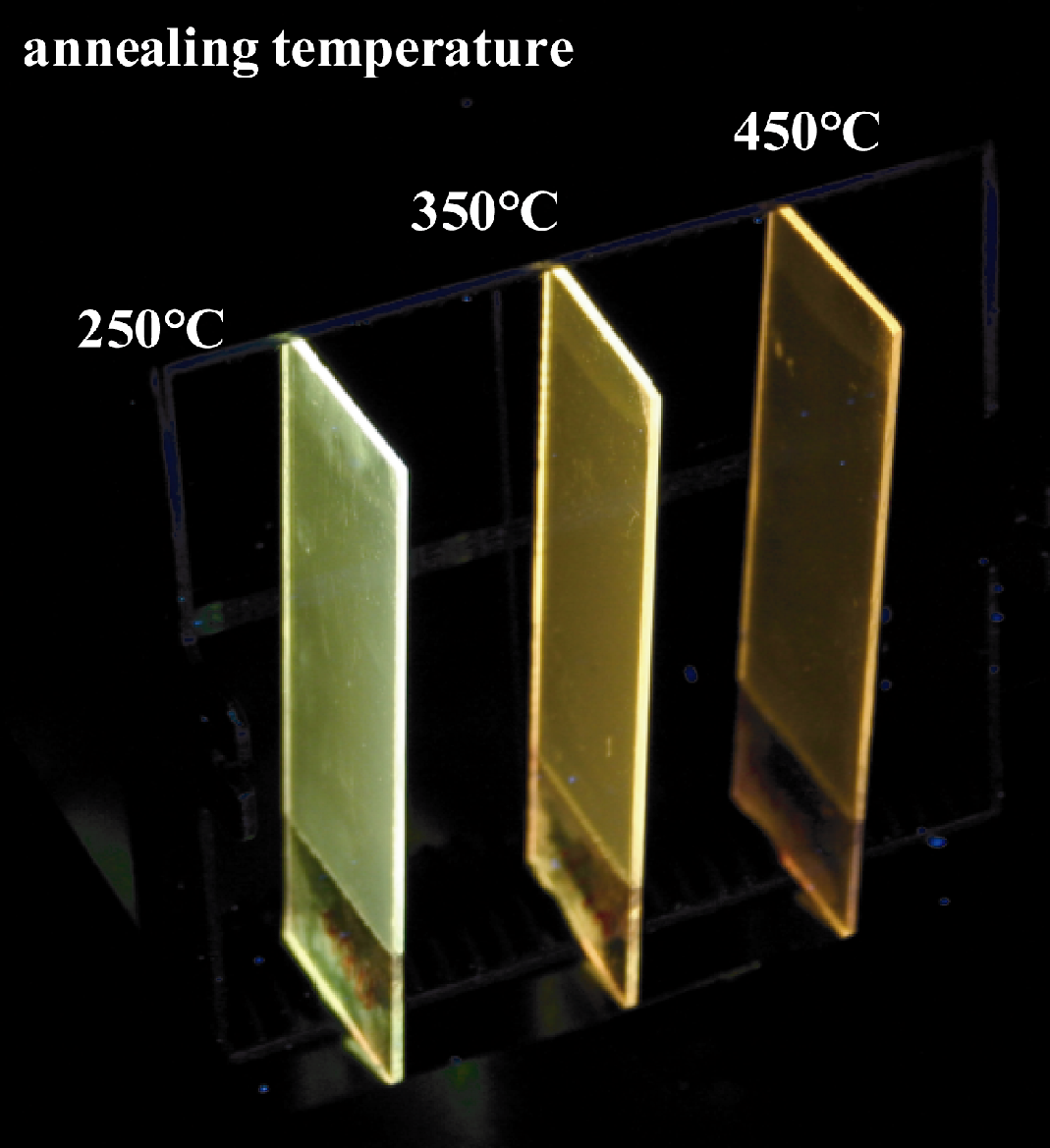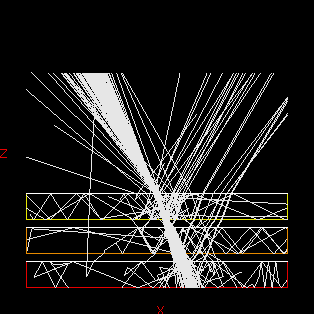Contact: Andreas Schueler
Concentration of solar radiation is an effective way to reduce cost in solar electricity generation. While direct sunlight can be concentrated easily by mirrors in solar power plants located in sunny countries, there are not many options to concentrate diffuse solar radiation, the latter occurring frequently in central European latitudes. According to the optical Liouville theorem, conservation of phase-space volume or optical etendue leads to strict limits to concentration in geometrical optics [WIN2009]. In classical statistical physics, entropy is shown to have a logarithmic dependence on phase-space. The optical etendue is a quantity closely related to phase-space. By using a Stokes shift in the optical medium, we can trade-off the etendue with heat delivered to the ambient resulting in an exponential boost in brightness. This is turn can deliver an exponential boost in concentrated flux. A recent innovation is the use of quantum dots for accomplishing the Stokes shift.
Likewise, quantum dot photoluminescent concentrators for photovoltaic solar energy conversion allow to concentrate not only direct but also diffuse solar radiation to a considerable extend. Hereby the energy collected on a large surface can be concentrated on a relatively small area of photovoltaic cells located at the edge of a fluorescent glass pane. Instead of immersing quantum dots in transparent resins, we propose to deposit quantum dot containing silicon dioxide films on highly transparent low iron glass substrates by sol-gel dip-coating [SCH2007a] (see Fig.1). Unlike the organic dyes, quantum dots have the advantage of not being sensible to UV radiation and offer durable performance.
Using Monte Carlo methods, we have developed a computer code for ray tracing simulations of quantum dot solar concentrators [SCH2007b]. Random events model the wavelength dependent behaviour for polarization dependent reflection/transmission at interfaces, photon absorption by the semiconductor nanocrystals and photoluminescent reemission.
Award
ABB Innovation Award 2007
Andre Kostro, Photonsim: development of a Monte Carlo ray tracing software for the simulation of photoluminescent solar concentrators, Master’s thesis supervised by A. Schüler
Selected References
[WIN2009] Winston, R., Beating the optical Liouville theorem, Optics and Photonics for Advanced Energy Technology 2009, Cambridge, Massachusetts United States, 24–25 June 2009, Optical Society of America (2009) ISBN: 978-1-55752-875-9
https://doi.org/10.1364/ENERGY.2009.WD8
[SCH2007a] Schüler, A., Python, M., Valle del Olmo, M., de Chambrier, E., Quantum dot containing nanocomposite thin films for photoluminescent solar concentrators, Solar Energy 81, 1159 (2007) https://doi.org/10.1016/j.solener.2007.01.015
[SCH2007b] Schüler, A., Kostro, A., Galande, C., Valle del Olmo, M., de Chambrier, E., Huriet, B., Principles of Monte-Carlo ray-tracing simulations of quantum dot solar concentrators, Proceedings of the ISES solar world congress 2007, Beijing, China 18th – 21st September 2007



Fig.1: Quantum dot containing nanocomposite coatings used in photoluminescent planar solar concentrators for photovoltaics. [SCH2007a]
- Sketch of the principle of photoluminescent solar concentrators. The incoming solar radiation is absorbed by the fluorescent material in the coatings. A large part of the emitted radiation is captured by total internal reflection and concentrated within the coated panes. At the edges only a small area of photovoltaic cells is needed in order to convert the radiation into electricity. The PV cells are spectrally matched to the emission wavelengths.
- Fluorescent quantum dot containing coatings, produced in our laboratory using a sol-gel dip-coating process. The main advantage is that large areas might be coated at very low cost. The inorganic nanocomposite coatings are expected to be highly durable.
- Monte Carlo ray tracing simulation performed with our computer code PHOTONSIM. The program takes into account the fluorescent properties of the used quantum dots, and polarisation dependent reflection and transmission at the interfaces.